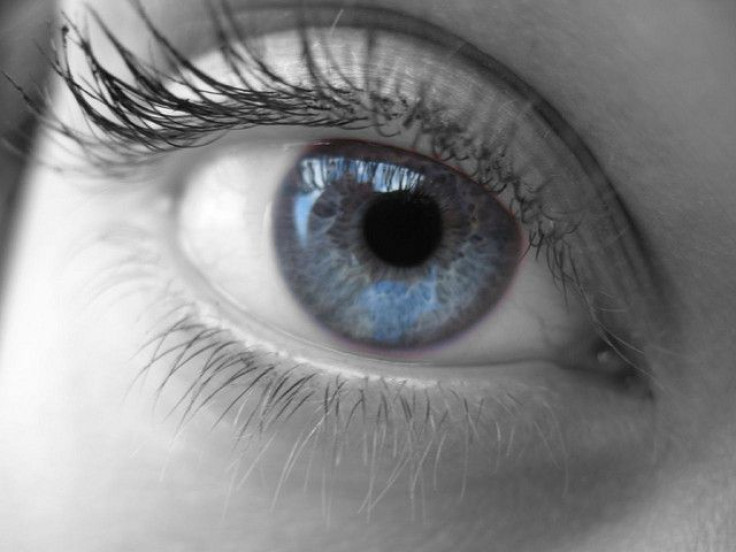15-Minute Gene Therapy For Blindness Accesses Deepest Part Of The Eye

Scientists have 'engineered' a new, quick gene therapy that can access the deepest part of the eye, the retina. Unlike current procedures being used in clinical trials, the new technique doesn't requires an injection step that is potentially dangerous and damaging to the retina.
Inherited diseases of the retina afflict one in 3,000 and can cause partial to total vision loss. They are primarialy caused by mutations in light-sensing sensing neurons that populate the outermost layer of the retina. These genetic defects gradually kill these cells or destroy their ability to work, leading to progressive blindness.
Gene therapy has shown much promise in early clinical trials for retinal disease, such as with the childhood disorder called Leber congenital amaurosis. Vision was restored in kids with this disease by using viruses to deliver corrective genetic material to these mutant cells.
While success of these trials has energized researchers in the field, the technique requires injecting the vision-saving viruses directly into the retinal tissue. This is a tedious, time-consuming process that can cause damage to the retina if done incorrectly.
In a study published in Science Translational Medicine, researchers from University of California, Berkeley, developed more versatile viruses that can deliver the sight-restoring genetic material without tearing up the retina. The study was led by Dr. David Schaffer, a chemical and biomolecular engineer and director of the Berkeley Stem Cell Center at the UC-Berkeley.
Adeno-associated viruses (AAVs) have been the delivery boys of choice for clinical trials for retinal gene therapy. In nature, these viruses can infect a wide variety of cell types — neurons, muscle cells, liver cells — but don't cause disease.
It is now common practice for scientists to re-engineer these viruses to carry corrective genes into cells, when studying or treating inherited diseases.
But they have one major problem: they're sticky. After injecting them into tissue, AAVs tend to remain in a relatively tiny area, limiting their ability to treat all of the afflicted cells in an organ. This is a setback even in the retina, which covers a relatively small area.
"Sticking a needle through the retina and injecting the engineered virus behind the retina is a risky surgical procedure," said Schaffer. "But doctors have no choice because none of the gene delivery viruses can travel all the way through the back of the eye to reach the photoreceptors - the light sensitive cells that need the therapeutic gene."
Armed with a library of 30 million different AAVs and a keen understanding of evolution, Schaffer and company set out to find an AAV with better mileage.
They injected this gigantic library of viruses into the clear, gelatinous center of a mouse eye, known as the vitreous humor, and checked whether any of the AAV strains could 'swim' and squirm their way through to the retina.
Schaffer's team found a subset of the AAVs could make their way to the retina. To select for the best 'swimmers,' this subset was put through this vitreous migration two more times.
One of the these AAVs, named 7m8, was picked for further trials in a mouse model of blindness.
They equipped 7m8 virus with the appropriate sight-restoring genetic cargo and dropped it into the vitreous humor. The virus was able to carry and deliver this cargo to all of the neurons in the mouse retina and restored their cell function.
To mimic a human scenario, the 7m8 virus was tested in the eyes of adult macques and penetrated deeper than any virus known to date.
This procedure only takes 15 minutes, which is a significant improvement to current methods.
Although it still requires putting a needle through the outer layer of the eye, it is also much less invasive since the injection deposits the virus in the inert liquid of the vitreous humor.
"Building upon 14 years of research, we have now created a virus that you just inject into the liquid vitreous humor inside the eye and it delivers genes to a very difficult-to-reach population of delicate cells in a way that is surgically non-invasive and safe. It's a 15-minute procedure, and you can likely go home that day," Schaffer concluded.
Further research is needed to confirm that the 7m8 AAV virus or a future derivative is safe for humans, especially in light of recent controversy surrounding AAV clinical trials.
A 36-year-old woman died in a 2007 AAV-based trial for rheumatoid arthritis, which was subsequently halted, but follow-up investigations suggest the virus wasn't to blame. Even in light of the somewhat tumultuous history of gene therapy, 7m8 AAV holds much promise for the future.
"When I first got here 14 years ago, I really had the idea or the goal that I wanted to work on problems that would have direct impact on human health, and we are now getting there," Schaffer said.
Source: Dalkara D, Byrne LC, Klimczak RR, et al. In Vivo-Directed Evolution of a New Adeno-Associated Virus for Therapeutic Outer Retinal Gene Delivery from the Vitreous. Science Translational Medicine. 2013.



























